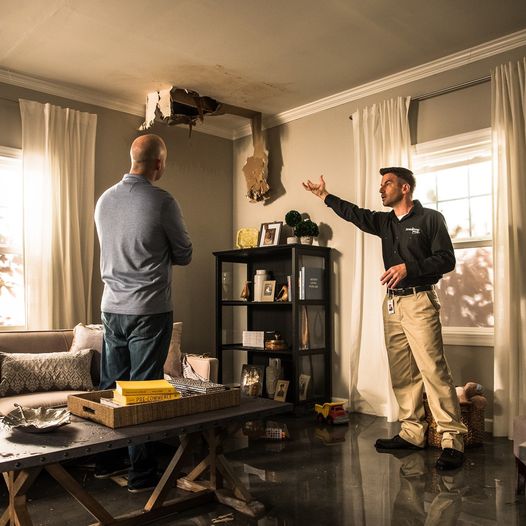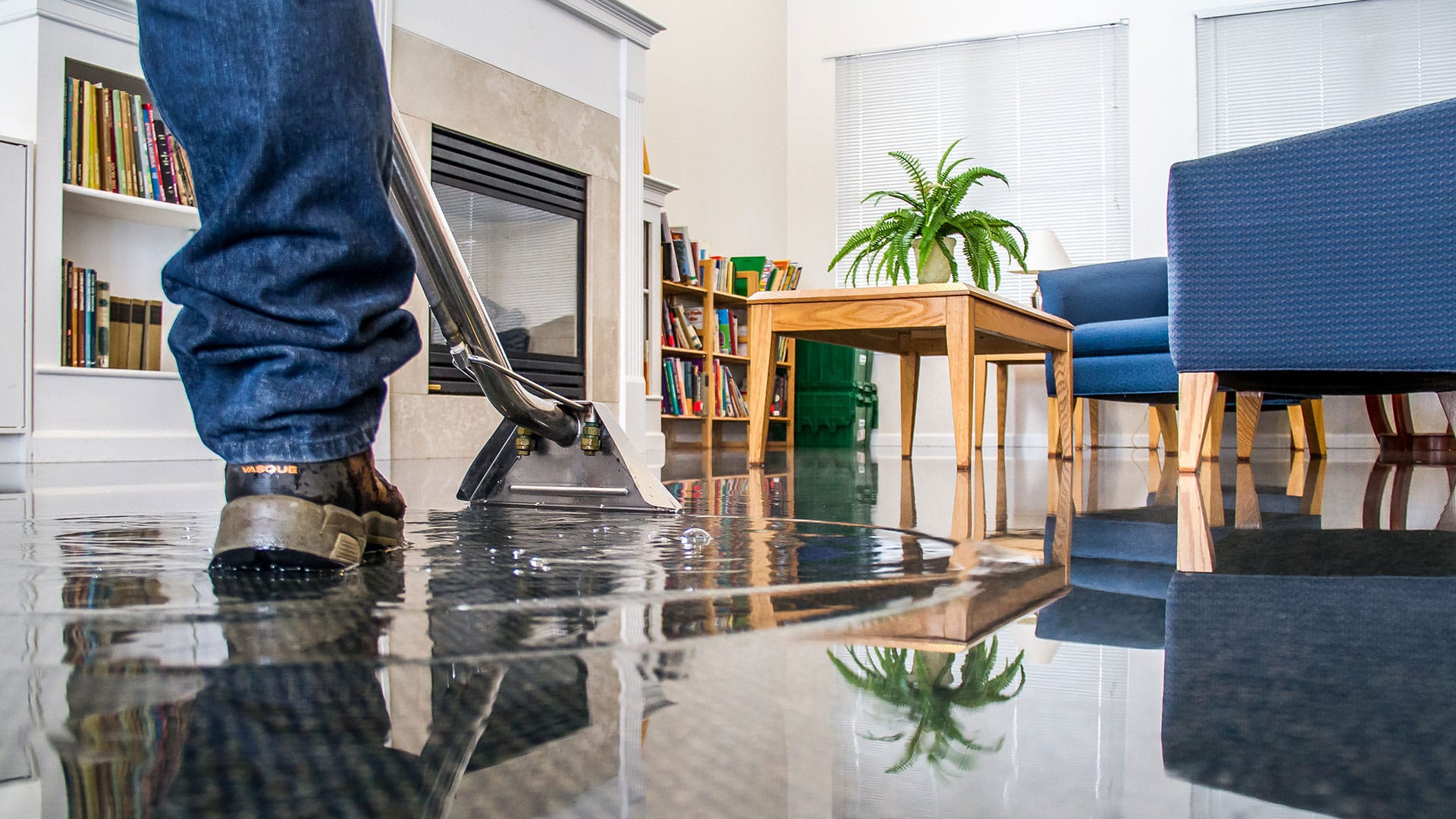Professional Mold Remediation Philadelphia: Transformative Solutions for Your Room
Professional Mold Remediation Philadelphia: Transformative Solutions for Your Room
Blog Article
Emergency Situation Water Damages Repair: Swift Response to Lessen Further Damages
Water damage can strike suddenly and leave devastating effects on organizations and homes. When faced with such a situation, a quick action is critical to minimize further damage and avoid prospective carcinogen. What exactly does emergency situation water damages repair require? In this conversation, we will certainly dive right into the value of prompt activity, the evaluation procedure, the actions entailed in water removal and drying out, mold and mildew prevention and remediation, and ultimately, the remediation of the affected location. By recognizing the seriousness and detailed nature of this process, you will gain valuable understandings right into just how experts deal with emergency water damages, ensuring a swift and reliable action.
Significance of Swift Reaction
Swift feedback is of utmost value in water damage restoration to lessen further damages and reduce potential dangers. The longer water sits in a structure, the more damages it can cause.
Among the primary reasons speedy action is important in water damages remediation is to protect against the growth of mold and mildew and mildew. Mold can begin to grow within 24 to two days of water exposure, and when it holds, it can spread swiftly throughout the affected location. Mold and mildew not only causes further damage to the structure of the structure but likewise postures wellness dangers to occupants. By responding promptly, professionals can extensively dry the area and hinder the growth of mold, minimizing the requirement for extensive remediation and making sure the safety of those included.
In addition, a punctual response can help salvage and bring back useful belongings and belongings - home inspector philadelphia. Water damages can be devastating, especially when it impacts individual products of nostalgic or monetary worth. Acting quickly enables experts to evaluate the damage and execute suitable restoration methods to salvage as much as possible. This not just aids to decrease economic losses however likewise brings comfort to those influenced.
Examining the Degree of Damages

During the evaluation, repair specialists completely take a look at the afflicted area to identify visible signs of damages, such as water discolorations, distorted products, and mold growth. They also make use of customized tools to find concealed damage, such as moisture meters and thermal imaging electronic cameras. This comprehensive analysis permits them to precisely identify the extent of the damages and establish a tailored reconstruction strategy.
Assessing the extent of water damages is crucial because it aids experts prioritize their efforts. They can determine areas that call for immediate focus, such as standing water removal and drying out, to stop additional damage and decrease the danger of mold growth. They can also figure out the areas that require repairs or substitute, making sure that no damage goes unnoticed or without treatment.

Water Extraction and Drying Out Refine
The water extraction and drying procedure is a critical action in water damages remediation, as it entails the removal of excess water and the thorough drying out of the affected area to avoid additional damages and mitigate the threat of mold and mildew growth. After assessing the level of the water damage, the next action is to extract the water from the damaged area.
This step is essential in stopping second damages, such as architectural damages and the growth of mold and mold. The drying process might take numerous days, depending on helpful hints the degree of Resources the water damages and the products included.
It is necessary to make certain that the affected area is completely dry before waging any type of fixings or reconstruction. Failure to extensively dry the location can bring about long-lasting problems, consisting of weakened structures, musty odors, and the development of mold and mold. For that reason, professional water damage remediation firms use dampness detection devices to make certain that the affected area is completely dry before proceeding to the next step.
Mold Avoidance and Removal
Effective mold avoidance and removal are crucial in water damages remediation to guarantee the safety and integrity of the damaged area. mold remediation philadelphia. When water damages takes place, whether from a burst pipe, flooding, or a dripping roof, it creates a suitable atmosphere for mold and mildew development. Mold can start to establish within 24 to 48 hours after water damage, and if left without treatment, it can spread rapidly and cause severe wellness threats
To protect against mold development, it is essential to deal with water damages immediately. The first step is to determine and repair the resource of the water intrusion.
In situations where mold growth has already happened, removal is webpage essential to remove the mold and mildew and stop its return. This involves the cautious elimination and disposal of affected products, such as drywall or carpeting, to make sure that all traces of mold are eliminated. It is necessary to keep in mind that mold and mildew removal need to be performed by experts that have the needed training and equipment to safely remove and deal with mold.
Restoring the Affected Area

First of all, it is necessary to thoroughly dry the area to avoid any more damage and to inhibit the development of mold and mold. This may involve making use of specialized drying out equipment, such as dehumidifiers and industrial-grade fans, to eliminate all moisture from the afflicted surfaces.
As soon as the location is entirely dry, the restoration process can start. This may involve fixing or changing damaged structural aspects, such as ceiling, flooring, or drywall floor tiles. It is essential to resolve any type of underlying problems that may have created the water damages, such as leaky pipelines or damaged plumbing, to avoid future events.
In addition, recovering the damaged location may additionally consist of repainting walls, replacing harmed fixtures, and completely cleansing and sanitizing the space. This makes sure that not just is the area structurally sound, however it is also cosmetically pleasing and safe for tenancy.
Verdict
In conclusion, quick feedback is critical in minimizing more damages triggered by water emergency situations. Examining the extent of damages enables for reliable water extraction and drying processes to be executed. Additionally, mold and mildew prevention and removal are essential in bring back the damaged location. Generally, prompt action and detailed reconstruction steps are crucial to reducing the unfavorable effects of water damages.
Swift action is of utmost relevance in water damage reconstruction to minimize additional damage and minimize possible risks.Throughout the assessment, repair professionals extensively take a look at the affected location to identify noticeable indications of damage, such as water stains, warped products, and mold development.The water extraction and drying process is a vital action in water damages reconstruction, as it involves the elimination of excess water and the thorough drying out of the damaged area to stop further damage and reduce the danger of mold growth. After evaluating the extent of the water damages, the following action is to remove the water from the afflicted location.Effective mold avoidance and remediation are essential in water damages reconstruction to make certain the security and integrity of the afflicted location.
Report this page